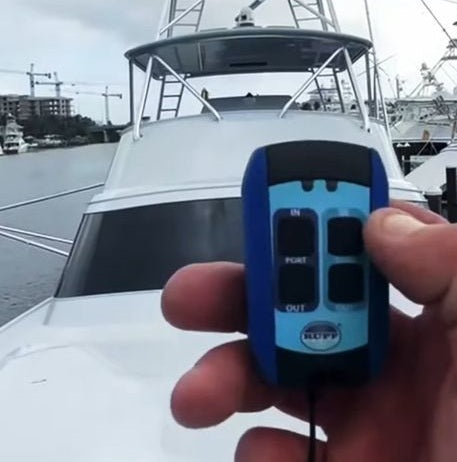At Rupp Marine, we’ve spent over four decades perfecting outrigger systems, and along the way, we’ve seen the same mistakes show up time and again.
Here are the five most common outrigger mistakes we see—and how to avoid them so you can stay focused on the bite.
1. Improper Mounting
This is one of the most critical (and expensive to fix) mistakes made during the installation process. Improperly mounted outriggers or outrigger bases can limit rotation, interfere with rigging angles, or create clearance issues with hardtops, antennas, or tower structures. Poor placement can also impact the outrigger's ability to lock securely in place. For larger outrigger systems an overly aggressive mounting angle will reduce the outrigger spread geometry, less spread is less water covered by your baits.
How to avoid it:
Consult with your boat builder, a Rupp-authorized installer, or our team before drilling. Ensure full rotation and layout can be achieved without obstruction. For hydraulic units the cylinder mounting location is critical to outrigger function (spread), and be sure the hydraulic power unit is mounted in a dry, accessible area with ventilation—never in a bilge.

2. Neglecting Regular Maintenance
Marine environments are harsh—salt, UV exposure, and motion can all take a toll. Yet many outriggers go season after season with no inspection or upkeep. This can lead to stiff movement, seized locking mechanisms, corrosion, or even internal damage to hydraulic cylinders.
How to avoid it:
Rinse outriggers with freshwater after every trip and follow our maintenance guidelines for Rupp Outriggers. Replace missing bushings and tighten any loose bolts. Lubricate moving components using Rupp-approved products like Alumaguard, and occasionally apply a marine quality wax or ceramic coating. Check rigging tension and look for wear on halyards, pulleys, and fittings. Hydraulic users should inspect fluid levels and fittings regularly, especially before long-range trips.

3. Poorly Adjusted Halyard Lines and Release Clips
Even with high-end outriggers, poorly tuned halyards can sabotage your entire spread. Over-tensioned halyard lines create excessive friction and can overload outrigger tip sections, resulting a bend, while under-tensioned lines can lead to inconsistent bait presentation. Improperly adjusted release clips can fail to release when a fish strikes which can potentially cause outrigger damage.
How to avoid it:
Set halyard tension so that baits track cleanly without bouncing or dragging. Position your release clips in the proper location relative to your fishing style. Rupp’s adjustable clips (like Klickers® or Nok-Outs®) are designed to fine-tune this easily, allowing for a consistent release, every time. Follow rigging diagrams and, when in doubt, ask your captain or more experienced angler to demonstrate proper placement and tension.

4. Over-Polishing or Using Abrasive (or Acidic) Cleaners
It’s natural to want your riggers looking showroom-new. But using harsh metal polishes, abrasives, or acidic cleaners can permanently damage anodized aluminum finishes. Once the anodizing is compromised, the pole becomes far more susceptible to corrosion and pitting.
How to avoid it:
Use only non-abrasive marine-grade cleaners and waxes. Avoid anything labeled “acid-based,” “aluminum brightener,” or “metal polish” unless it specifically states it’s safe for anodized aluminum. To maintain and protect the finish, apply a non-toxic protectant like Rupp Alumaguard after cleaning.

5. Poorly Adjusted Layout (Knuckle Arms)
For systems with manual (non-hydraulic) knuckle arms, improper adjustment can lead to limited spread, reduced locking engagement, or even contact with a spreader tube. This is easy to fix but often goes unaddressed.
How to avoid it:
Make sure layout arms (also known as knuckle arms) are set to match your specific pole length and desired fishing angle. Be sure the arm is aligned with the outrigger tube when stowed. Misalignment can result in binding which will loosen the component over time.
Final Thought
Outriggers are more than just gear—they’re extensions of your boat and your crew. By avoiding these common mistakes, you’ll extend the life of your equipment, keep your spread dialed in, and make every offshore trip more productive and enjoyable.
Need help with setup or service?
Contact Rupp Marine or one of our certified partners. We’re here to help you fish smarter and run safer.
Relevant Links:




